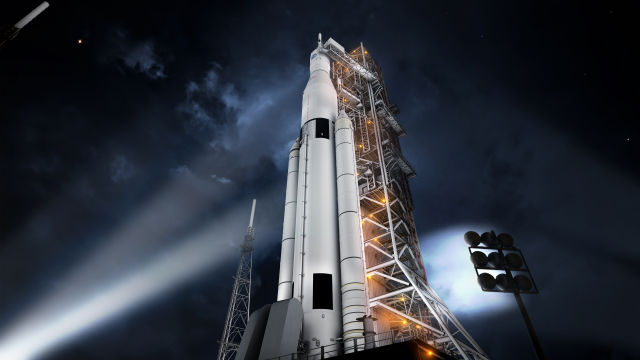
This week, the Commercial Spaceflight Federation, which counts rocket builders SpaceX and Blue Origin among its executive members, made news by declaring its support for NASA’s Space Launch System rocket. The organization’s new chairman, Alan Stern, announced during a conference that “we see many benefits in the development of NASA’s SLS.” This caused a stir in the commercial space community.
Later, during an interview with Ars, Stern explained that the commercial space organization has, in the past, engaged in a “bruising battle” over the government’s massive rocket and its influential prime contractor Boeing. The commercial space industry group (of which Boeing is not a member) contended the private sector could deliver the same capability as the SLS for far less than the $2 billion NASA has spent annually this decade to develop the rocket. The SLS will initially be able to heft 70 metric tons to low Earth orbit, but that could grow to 130 metric tons by the late 2020s.
But now, Stern said the organization believes the SLS will enable the aims of commercial companies to develop businesses on the Moon, as well as support asteroid mining and other ventures his members are interested in. “We are taking a long view,” Stern said. “This is clearly to the advantage of the expansion of commercial spaceflight. Now, with a new administration and a new Congress, we wanted to put our stake down on the side of SLS.”
Don’t forget Sessions
At the same time this week, a Politico article noted the efforts of former NASA consultant and SLS critic Charles Miller to push the Trump space program toward an aggressive campaign to begin lunar landings by the end of 2020. Miller is a former member of Trump’s NASA transition team, and he envisions lunar landings becoming possible by leveraging commercial capabilities.
The Politico article says Miller is pushing the concept of an “internal competition” within NASA for launch and spacecraft contracts. The competition would be between NASA’s traditional contractors, such as Boeing and Lockheed Martin, and new space firms such as SpaceX and Blue Origin. For launches, a fair competition would almost certainly favor SpaceX and Blue Origin, both of whom are developing heavy lift rockets that are roughly in the same class as the 70-metric ton variant of the SLS. This is because both companies are essentially developing their rockets out of their existing funds—at no direct cost to taxpayers—and their per-launch costs would be a fraction of those forecast for the SLS.
The Politico piece likely overplays the influence of Miller, who is but one voice in the battle over NASA’s future. It’s worth remembering that a number of staffers from Jeff Sessions’ Senate office have moved over to positions in the White House, and they will have considerable say in NASA policy. Sessions is from Alabama, where the SLS rocket is being designed and developed at Marshall Space Flight Center.
Settled on the pad
So what does all this mean for the rocket wars? Instead of an “us vs. them” attitude, many aerospace insiders are taking an “all of the above” approach during the next few years when it comes to rocket capabilities. Given the politics, NASA will probably continue to devote about $2 billion of its $18 billion annual budget to the SLS rocket. At the same time, Congress can continue to pass legislation that does not hinder private efforts to develop heavy-lift rockets.
Ultimately, this issue will probably be decided on the launchpad—where it should be. After all, SpaceX’s Falcon Heavy has not yet flown, although it may finally do so this year. NASA’s SLS rocket is nominally slated for a November 2018 launch, although Ars understands this launch date will probably slip into early 2019. And while not much is known about Blue Origin’s New Glenn orbital rocket, company founder Jeff Bezos has said it will fly by the end of this decade.
Theoretically, then, the United States could have three heavy lift rockets at its disposal in 2020. If the reusable Falcon Heavy costs $200 million per flight, and the reusable New Glenn costs $200 million, while an expendable SLS rocket costs $1.5 billion, the agency—and by extension Congress and the White House—will have an easy choice to make.
One could argue at that time that NASA should never have spent in excess of $10 billion developing the SLS. But the bottom line is that, six years ago, Congress did not believe in the capacity of SpaceX to build a heavy lift rocket, and Blue Origin’s intentions were not known at that time. So Congress bet on NASA and its traditional contractor Boeing, and the agency kept its large base of employees intact.
The Commercial Spaceflight Federation likely recognizes that raising its voice now, publicly at least, against the SLS has limited political upside with a Congress predisposed to favor NASA’s big rocket. Instead of poking NASA or Congress in the eye with a stick, better to stay relevant. Ultimately, when SpaceX, Blue Origin, or both have a launch capability that costs far less than the public alternative, the commercial space organization will have a much more potent argument to make.
reader comments
96